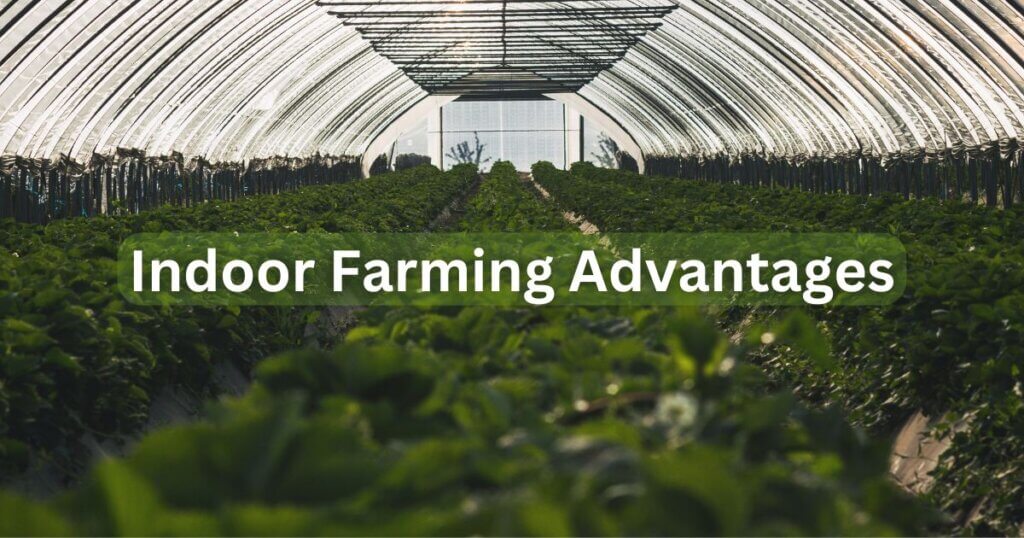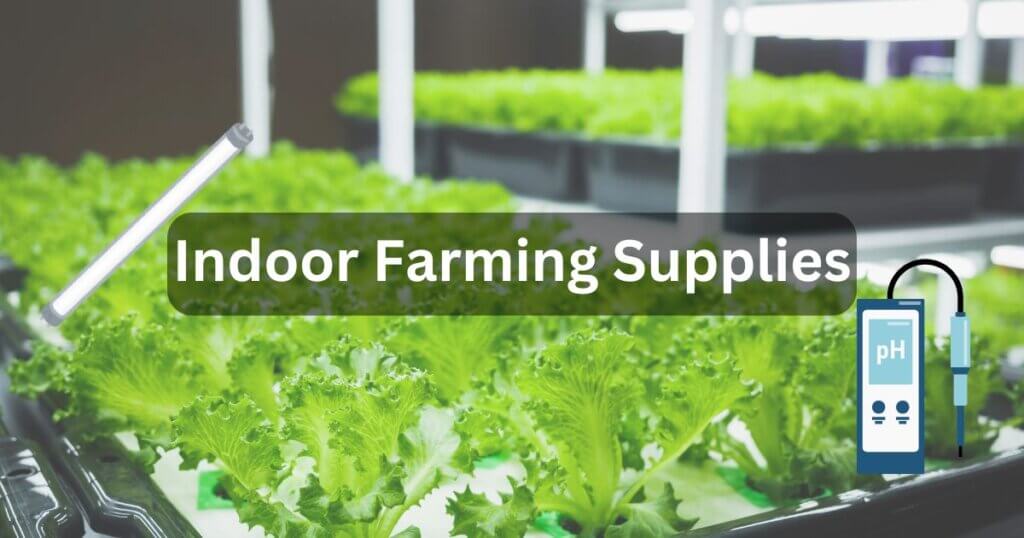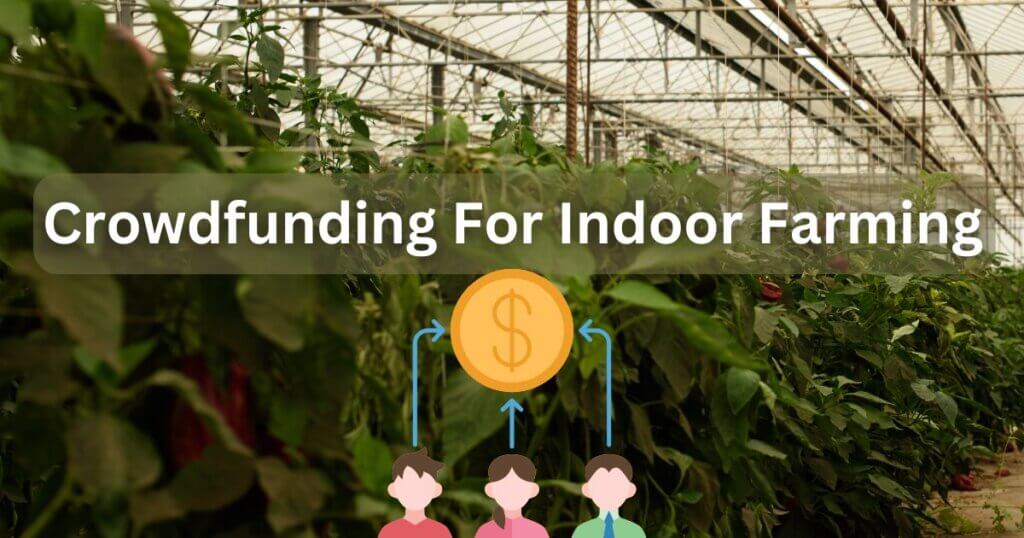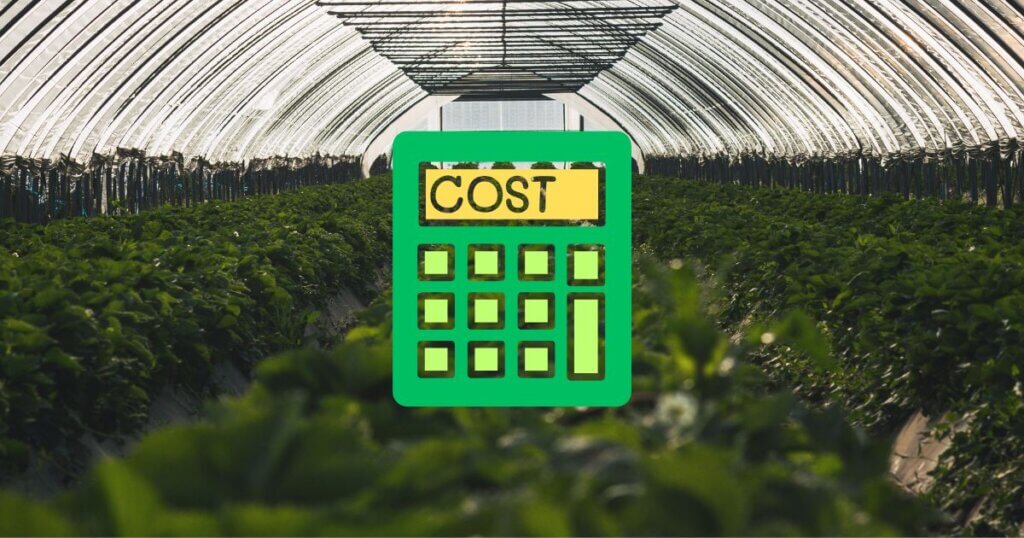Indoor Farming Advantages: A Greener Future

Indoor farming, also known as vertical farming or controlled environment agriculture (CEA), is a modern and innovative approach to growing crops in an enclosed environment. This article explores the numerous advantages of indoor farming and how it can pave the way for a greener and more sustainable future. From mitigating climate challenges to maximizing resource efficiency, indoor farming offers a range of benefits that are revolutionizing the agricultural industry.
Table of Contents
The Rise of Indoor Farming
Indoor farming has gained significant traction in recent years due to its potential to address some of traditional agriculture’s key challenges. By utilizing advanced technologies, such as hydroponics, aeroponics, and artificial lighting, indoor farms can create optimal conditions for plant growth without relying on conventional soil-based cultivation. These innovations help maximize efficiency while reducing dependence on natural resources, making food production more sustainable. Let’s delve into the advantages of indoor farming and how they contribute to a sustainable future.
1. Resource Efficiency
1.1 Water Conservation
Indoor farming drastically reduces water consumption compared to traditional farming methods. Through precise irrigation systems and recycling techniques, indoor farms can use up to 95% less water while achieving high crop yields. By capturing and reusing water, these systems help conserve a vital natural resource while preventing excessive water wastage. This water conservation preserves local water supplies and contributes to long-term sustainability in agriculture.
To optimize water recycling in small-scale hydroponic setups, the Active Aqua Submersible Pump is an efficient, quiet, and reliable choice for moving nutrient-rich water through your system.
1.2 Land Utilization
With the world’s population steadily increasing, the demand for agricultural land is also rising. However, indoor farming requires significantly less land compared to traditional farming methods. By utilizing vertical space and maximizing production per square foot, indoor farms can produce higher yields using a smaller footprint. This efficient land utilization opens up opportunities for farming in urban areas, reducing the need for long-distance transportation of food and promoting localized food production.
1.3 Energy Efficiency
Indoor farming relies on advanced lighting systems, such as LED technology, to provide the necessary light for plant growth. Compared to conventional lighting sources, LEDs consume significantly less energy and emit less heat, making them more energy-efficient. Additionally, the controlled environment in indoor farms reduces the need for energy-intensive practices like pest control, resulting in further energy savings. Some farms even integrate renewable energy sources, such as solar and wind power, to further enhance their sustainability.
One of the best-rated options for energy-saving plant growth is the BESTVA 2025 Upgraded BP2000 LED Grow Light, offering full-spectrum coverage and dimmable brightness for all growth stages.
2. Climate Resilience
2.1 Year-Round Production
Indoor farming enables year-round crop production regardless of external climate conditions. Farmers can optimize temperature, humidity, and light levels by creating a controlled environment to mimic ideal growing conditions. This eliminates the dependence on specific seasons and geographical locations, ensuring a consistent and reliable supply of fresh produce throughout the year. As a result, food shortages caused by seasonal changes or extreme weather events can be significantly reduced.
To create consistent year-round conditions, consider the VIVOSUN Complete Grow Tent Kit, which includes a grow tent, LED light, carbon filter, and ventilation system—everything needed for a controlled indoor farm.
2.2 Climate Change Adaptation
Climate change poses significant challenges to traditional agriculture, including extreme weather events and shifting rainfall patterns. Indoor farming provides a climate-resilient solution by mitigating these risks. The enclosed environment shields crops from adverse weather conditions, reducing vulnerability to droughts, floods, and temperature fluctuations. This adaptability ensures food security even in the face of changing climatic conditions, offering a more stable alternative to conventional farming.
2.3 Reduced Carbon Footprint
Transporting food over long distances contributes to greenhouse gas emissions. Indoor farming near urban centers reduces the need for long transportation routes, minimizing carbon emissions associated with food distribution. Additionally, the controlled environment in indoor farms allows for precise monitoring of inputs, reducing the need for chemical fertilizers and pesticides. By incorporating sustainable practices, indoor farming helps lower the overall carbon footprint of agricultural operations.
3. Enhanced Crop Quality and Yield
3.1 Optimal Growing Conditions
Indoor farming provides precise control over environmental factors, resulting in optimal plant growth conditions. By adjusting variables such as light spectrum, nutrient levels, and air composition, farmers can optimize crop growth and quality. This level of control eliminates the variability caused by external factors, ensuring consistent and superior-quality production. As a result, consumers can enjoy fresher, healthier, and more nutritious food year-round.
The AeroGarden Harvest is a compact hydroponic system that provides automatic lighting and watering, making it easy for anyone to grow fresh herbs or vegetables indoors.
3.2 Year-Round Harvests
Growing crops throughout the year in indoor farms allows for a continuous harvest cycle. Farmers can produce multiple harvests in a shorter period, increasing overall crop yield. With careful planning and efficient use of space, indoor farms can achieve higher productivity than traditional farms limited by seasonal constraints. This not only meets the growing demand for fresh produce but also enhances food security on a global scale.
3.3 Pest and Disease Control
Indoor farming reduces the risk of pests and diseases that can devastate crops. The controlled environment helps to minimize the presence of pests, eliminating the need for harmful chemical pesticides. Additionally, the enclosed space prevents the spread of diseases, ensuring healthier plants and reducing the reliance on antibiotics or fungicides. By maintaining strict biosecurity measures, indoor farms can deliver safer and cleaner produce to consumers.
4. Technological Innovations in Indoor Farming
4.1 Precision Agriculture
Indoor farming is at the forefront of precision agriculture, utilizing data-driven technologies to optimize every aspect of crop growth. Sensors, Internet of Things (IoT) devices, and artificial intelligence (AI) are integrated into indoor farming systems to monitor environmental conditions and plant health in real-time. This technology allows for precise adjustments, reducing waste and improving resource use. As these technologies advance, indoor farming will continue to evolve, increasing efficiency and crop production.
The Bluelab Combo Meter is a reliable tool for monitoring pH, EC, and temperature—critical variables in any indoor hydroponic or aeroponic farm.
4.2 Automation and Robotics
Another critical advancement in indoor farming is the use of automation and robotics. From seeding to harvesting, robots can streamline labor-intensive tasks, reducing the need for manual labor and increasing operational efficiency. Automated systems can also monitor plant health, detect diseases, and perform essential tasks such as pruning or cleaning. These innovations further increase the sustainability and profitability of indoor farms by reducing human error and labor costs.
To automate environmental controls affordably, the INKBIRD Smart Controller lets you set temperature and humidity parameters with WiFi control from your smartphone.
4.3 Artificial Intelligence and Machine Learning
Artificial intelligence and machine learning are rapidly being adopted in indoor farming, helping farmers make better decisions through data analysis. These technologies can predict trends, identify inefficiencies, and even help forecast crop yields. AI can also improve disease detection and pest management, ensuring that plants grow in the most optimal conditions possible. With continued advancements, AI could revolutionize the way we farm indoors, making it even more sustainable and efficient.
5. The Future of Indoor Farming
5.1 Urban Farming Revolution
As cities around the world become more populated, urban farming is likely to play a pivotal role in food production. Indoor farming offers a unique solution to feed urban populations without relying on vast tracts of land. Vertical farms can be established in abandoned buildings, warehouses, and even underground spaces, turning unused urban areas into productive agricultural hubs. As urban farming grows, it could revolutionize food distribution, bringing fresh, locally grown produce to city dwellers.
Perfect for balconies or patios, the Stacky 5-Tier Vertical Planter lets you grow herbs, greens, or strawberries in minimal space.
5.2 Vertical Farming and Sky Farms
Vertical farming is a rapidly emerging trend in indoor agriculture that maximizes space by growing crops in stacked layers or towers. These “sky farms” are often housed in multi-story buildings and are designed to be efficient, high-yield systems. Vertical farms can accommodate a wide variety of crops, from leafy greens to herbs and even fruits, making them versatile solutions for urban environments. With advances in technology, vertical farming could become a mainstream method for growing food in cities worldwide.
5.3 Sustainable Food Systems
As we look to the future, indoor farming will be a key player in building more sustainable and resilient food systems. By reducing the environmental impact of conventional agriculture, including soil depletion, water scarcity, and excessive carbon emissions, indoor farming offers a viable solution for a growing global population. With its efficient use of resources and its ability to operate year-round, it will play a crucial role in ensuring that future generations have access to fresh, nutritious food.
6. Challenges and Opportunities for Indoor Farming
6.1 High Startup Costs
One of the primary challenges of indoor farming is the high upfront investment required to set up the necessary infrastructure. Advanced lighting systems, climate control technology, and hydroponic or aeroponic systems can be expensive, making it a barrier to entry for smaller farmers or startups. However, as technology improves and becomes more cost-effective, the initial investment will decrease, making indoor farming more accessible. Additionally, the long-term benefits, such as higher yields and resource savings, can offset these costs over time.
For newcomers looking to get started affordably, the Hydroponics Kit is a budget-friendly indoor growing system perfect for herbs, lettuce, and more.
6.2 Consumer Education and Market Adoption
For indoor farming to reach its full potential, there is a need for greater consumer awareness and education about the benefits of locally grown, sustainable produce. Many consumers are still unfamiliar with indoor-grown products and may question their quality or price. However, as awareness spreads and demand increases, more supermarkets, restaurants, and consumers will recognize the value of these products. Educational campaigns can help foster a more informed consumer base, leading to higher market adoption of indoor-grown produce.
6.3 Policy and Regulatory Support
Government policies and regulations will play a significant role in shaping the future of indoor farming. Supportive policies such as subsidies, tax incentives, or research funding can help alleviate some of the challenges associated with indoor farming. Additionally, creating regulations that ensure the quality and safety of indoor-grown products will build trust with consumers and expand market opportunities. With the right regulatory frameworks in place, indoor farming could become an integral part of the global food system.
7. Real-World Examples of Successful Indoor Farms
7.1 Vertical Harvest (Wyoming, USA)
One of the notable examples of successful indoor farming is Vertical Harvest, located in Wyoming, USA. This vertical farm utilizes hydroponics and aquaponics to produce fresh vegetables and herbs. By utilizing a multi-story building in an urban setting, Vertical Harvest maximizes space and ensures year-round food production. This farm demonstrates how urban areas can benefit from indoor farming, reducing the need for transportation and creating more sustainable food systems.
7.2 AeroFarms (New Jersey, USA)
AeroFarms, located in New Jersey, is another leader in the field of indoor farming. This company specializes in aeroponics, a method of growing plants without soil using nutrient-rich mist. Their facility, which is one of the largest vertical farms in the world, produces leafy greens and herbs with minimal water usage. AeroFarms has pioneered sustainable indoor farming methods and continues to push the boundaries of what’s possible in controlled environment agriculture.
7.3 The Plant (Chicago, USA)
The Plant in Chicago is a prime example of a sustainable urban farm that utilizes indoor farming practices. This facility combines aquaponics, vertical farming, and renewable energy sources to grow food in an energy-efficient way. By creating a closed-loop system, The Plant aims to produce food while reducing waste and energy consumption, showcasing the potential for integrated urban farming systems in densely populated cities.
Conclusion
Indoor farming offers many advantages contributing to a greener and more sustainable future. With resource efficiency, climate resilience, and enhanced crop quality, this innovative farming method revolutionizes how we grow food. Indoor farming addresses key challenges traditional agriculture faces by reducing water consumption, optimizing land utilization, and minimizing energy requirements. Moreover, its adaptability to climate change, reduced carbon footprint, and year-round harvests make it a promising solution for global food security. Embracing indoor farming can lead to a more sustainable and resilient agricultural system.
FAQs – Indoor Farming Advantages
1. What types of crops are best suited for indoor farming?
Indoor farming works best for crops that thrive in controlled environments, such as leafy greens, herbs, microgreens, and certain fruits like strawberries and tomatoes. However, advancements in technology are making it possible to grow a wider range of crops, including mushrooms and even some root vegetables.
2. How much space is needed to start an indoor farm?
The space required for indoor farming can vary depending on the system used (e.g., hydroponics, aeroponics, vertical farming). Small-scale operations can begin in as little as a few hundred square feet, while larger facilities may need several thousand square feet. Vertical farming, in particular, maximizes space efficiency, allowing farms to operate in urban areas with limited land.
3. What are the ongoing operational costs of indoor farming?
While initial setup costs can be high, the ongoing operational costs of indoor farming primarily include electricity (for lighting and climate control), water, nutrients, and labor. However, these costs can be offset by the high yield per square foot, reduced transportation costs, and the ability to grow crops year-round.
4. Can indoor farms be integrated into existing buildings or infrastructure?
Yes, indoor farming can be integrated into existing buildings, warehouses, or even repurposed commercial spaces. This is especially common in urban farming projects, where unused areas such as rooftops, basements, or abandoned buildings are transformed into productive farming spaces.
5. How does indoor farming impact the nutritional content of crops?
Indoor farming allows for precise control over environmental factors, such as light and nutrients, which can lead to enhanced crop quality and nutritional content. By optimizing growing conditions, indoor farms can produce crops that are more nutrient-dense, fresher, and potentially healthier than conventionally grown produce.
Other Useful Resources Related To Indoor Farming Advantages
- Vertical Farming – Wikipedia: This comprehensive article discusses the benefits of vertical farming, including increased crop production, reduced need for farmland, and conservation of natural resources.
- Controlled-environment agriculture – Wikipedia: This page outlines the advantages of controlled-environment agriculture, such as water efficiency, space optimization, and year-round production.
- Hydroponics – Wikipedia: This article explores the benefits of hydroponic systems, including resource management, higher yields, and urban crop growth potential.
- Kashmir’s saffron growers experiment with indoor farming as climate pressures mount: This Reuters article highlights how indoor farming methods are being adopted in Kashmir to combat climate change impacts on traditional saffron cultivation.
- More yield, less field: how vertical farming is saving space, water, and emissions: This Guardian article discusses how vertical farming contributes to increased yields, reduced water usage, and lower carbon emissions.











